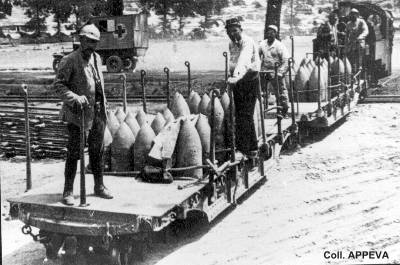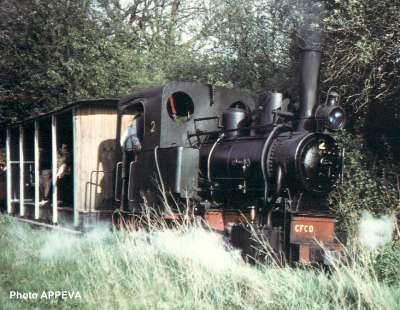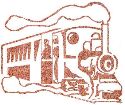Origins
The "Petit train de la Haute Somme" is the last remaining section of a large military network built during WW1.
The site is situated right in the zone of the battle of the Somme (July to November 1916) where British and French armies had built a considerable network to prepare the offensive of July 1st 1916 and supply the artillery, the tommies and the "poilus" French soldiers in trenches.

The Froissy - Cappy line, along the canal, was part of "Line B" which started from the village of Cerisy/Les buttes (near Villers-Bretonneux). This line was serving the whole zone from the ponds area to Frise.
In 1916, the line was extended to follow the advance of the soldiers across marshes to the villages of Hem, Cléry and Bouchavesnes.
To join the front, steam locomotives were replaced in the village of Frise by petrol engines, more difficult to spot by the enemy; ammunition traffic to the front line was standing generally at night. The little train was able to carry up to 1500 tonnes of ammunition a day.

After WW1, the network was reused from 1919 to 1924 by the "Ministère des Régions Libérées" (French Ministry in charge of the reconstruction) to rebuild this devastated area.
Then, the sugar refinery at Dompierre reprocessed the lines laid unused on the plateau. The refinery used them for its sugar beet transportation and its connections with the "Compagnie des chemins de fer du Nord" (standard gauge railway company) in Chaulnes (15km) and the canal of the Somme at Cappy (6km).

Save the line
In 1970, some railway enthusiasts decided to save the line that the sugar refinery was about to give up. They created the "Association Picarde pour la Préservation et l'Entretien des Véhicules Anciens - APPEVA" (society for preservation and restoration of heritage vehicles).
They rebuilt the track from Froissy to Cappy (1,5 km) with rails remaining from WW1 and hunted for steam locomotives all over France. The very first passenger train ran on June 13, 1971 and the first steam locomotive on July 14 of the same year.

The society volunteers bought up the line and the railway rolling stock used by the sugar refinery in 1974, and little by little adapted it to passenger traffic.
As there were no railway buildings along the line, the society members built a shed, then a little station at Froissy, and a few years ago, a museum where a part of the collection is on show: 38 steam or diesel engines and a bit more than 120 wagons.
To have more information about the "P'tit train de la Haute Somme", please refer to the "Guide du voyageur"* (the guide is on sale on Voie Etroite magazine web site).
* French only





